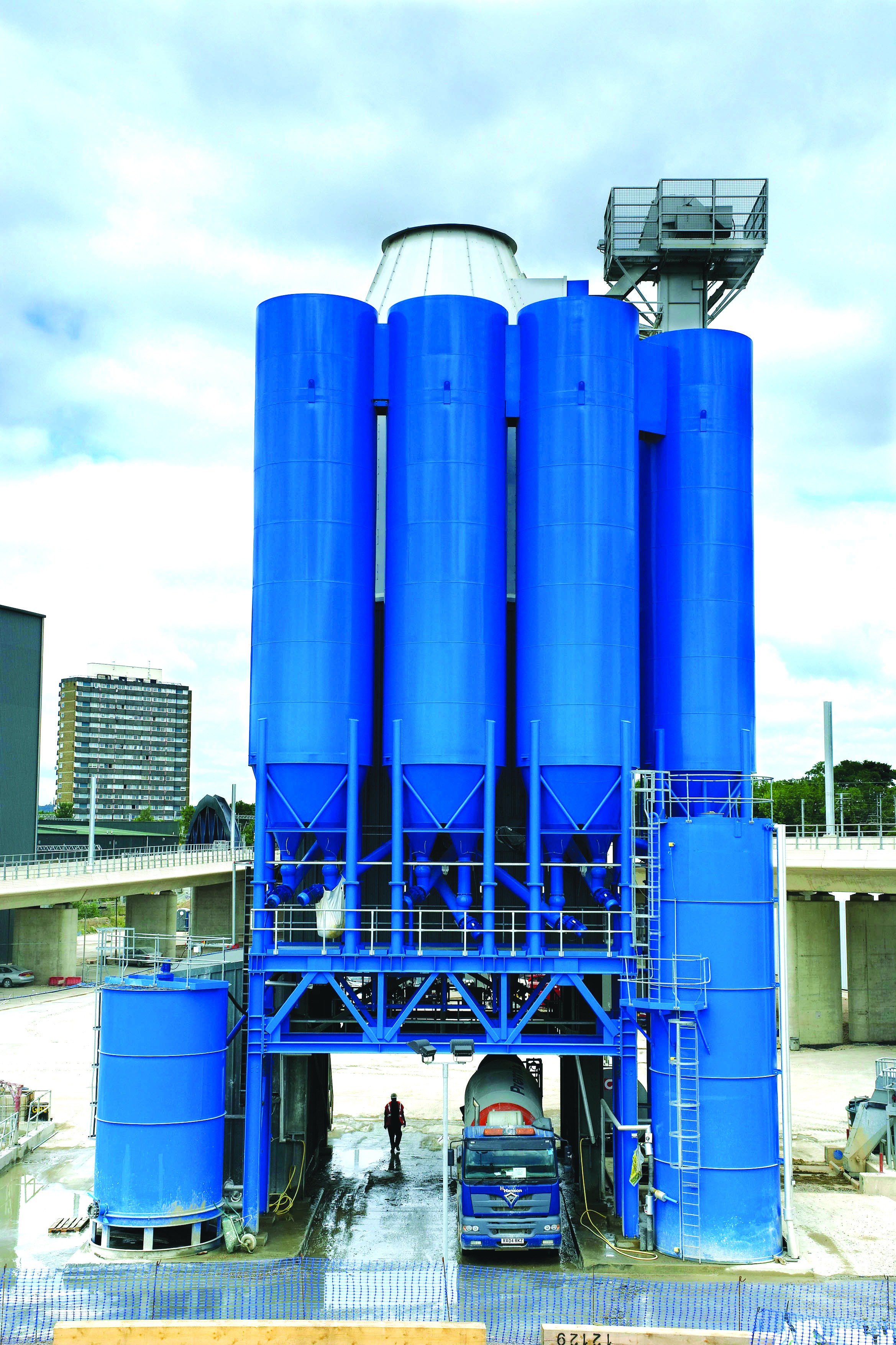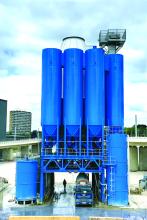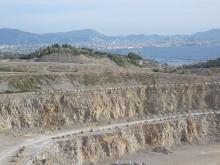
Transferring technicaland environmental knowledge about concrete to the contractor, client and specifier is an important task for the sector, according to the BRMCA'S Martin Hardwick
Concrete has very good environmental credentials despite its high energy intensity requirements at the time of manufacture. But while this is well known in the industry, the concept is not so well understood in the wider construction industry or by construction clients.
Drawing together both the technical and environmental benefits of the various associations representing the aggregates, cement and ready mixed concrete sector in the UK is a job charged to Martin Hardwick. In May this year he took on the role as product director of the British Ready Mixed Concrete Association (BRMCA) - the concrete group of the UK's
Talking to Hardwick, it is clear that he believes concrete has a key place in the ever more environmentally aware construction sector but more communication is needed to ensure the benefits are fully realised. He is well positioned to understand the issues facing different parts of the supply chain having started life with RMC (now part of
Despite only taking on the post six months ago, Hardwick has already started to help the industry to put some important documents and partnerships into place.
One of the first to come to fruition was the signing of a
"Concrete has a bad image as a green product in the minds of the general public because of the high energy intensity at the time of manufacture, but factor in the energy over the life cycle and concrete's high thermal mass and it is a different story," explained Hardwick.
Part of the strategy includes development of a sustainability report for the sector, which is due to be published next March. Although many companies produce their own sustainability reports, this will be the first for the sector and will provide a benchmark to chart further improvement.
"The report will include details of quality systems, environmental systems, carbon dioxide emissions and also look at the use of secondary aggregates in concrete production," he said.
"The concrete sector has a very positive message to send out and this kind of report will help to demonstrate that any progress is already building from a sound starting block - already around 90% of concrete uses secondary aggregates such as fly-ash. The transport side is also important - ready mixed concrete is usually a local product that is only transported 10 to 15km from the plant and many raw materials are brought to the plant by sustainable means." Another related initiative that Hardwick is involved with is development of a responsible sourcing standard with the British Research Establishment (BRE). "Most ready mixed concrete producers already do this but having an official standard will help to add traceability," he explained. "The consolidation in the sector has helped with this as often the source for the aggregates and cement is in house. The standard will give materials a point score based on the type of sourcing.
"Concrete, whether ready mixed or precast, will score more highly than other building materials such as timber and steel because it is much easier to prove where the raw materials came from and how they were extracted." A British Standard - BS8900-2 - on responsible sourcing is due to be published in early 2010 and it is likely that the knowledge gathered during development of the BRE initiative will be fed into this. Like other British Standards, it may also in time be adopted as an
"It is not just the concrete producers that want to use this kind of standard, it is also the contractors that want to be able to prove the credentials of the building products they use to their clients," said Hardwick. "Bovis Lend Lease, which spends around £4billion (€5billion) on construction materials each year, is a keen supporter of the standard. The company believes that such initiatives need to be adopted by the whole supply chain though." On a technical level, Hardwick believes that the link between the supply side and contractors is an important one. "One can't work without the other, so it is important that we provide feedback to each other about the challenges of both production and handling and placing on site," he said.
This is where Hardwick's previous career helps - he understands the issues on both sides, but he said that these are not always clearly communicated. He added that clients, along with contractors, also need to be more closely involved in specifications and at an early stage in the project too.
Greater communication across the supply chain has been one of the first areas to be addressed by a new partnership between BRMCA and the concrete structures group of Construct. Through this forum, the concrete industry has met with some of the UK's top consulting engineers to talk about the concerns and problems.
To illustrate the kind of area the partnership hopes to address, Hardwick points to the issues associated with high strength concrete. "There has been some confusion in the industry about the wide spread availability of high strength concrete," he explained. "Some engineers may want to specify the material but aren't sure about the availability and may take the easy route of specifying conventional materials. This means that the potential benefits of leaner construction through use of less material is lost." Hardwick has been working to help develop maps showing the location of quarries that can supply suitable aggregates and current availability of high strength concrete. "High strength concrete does need to be made to order but a considerable number of plants already have the right aggregates in stock," he explained. "The map shows that many plants around large construction centres, such as the south east do already have the materials on hand even though they may not have quarries locally to supply them.
"Nonetheless, by involving the supply chain early in a contract it is possible for materials to be brought into a plant to ensure high strength concrete is available for any contract it is specified on." Hardwick is also working to involve architects into the process and his team has developed a new guidance document for the sector. "It is designed to help redress life cycle impact and give the correct information for specifiers," he said. "We will also be looking to work with consultants to encourage greater use of the latest European concrete standards. They were adopted in 2001 but many consultancies still use the previous version so current projects are not benefitting from the latest research and knowledge. There is also a similar issue with testing of concrete.
"The industry is making progress but we still need to encourage contractors and consultants to engage with their clients, as well as their suppliers to get the best results."










